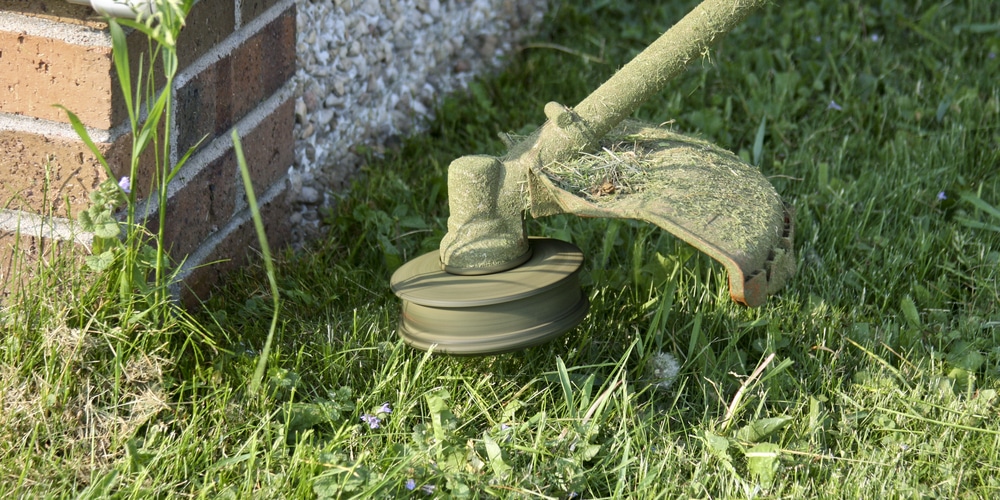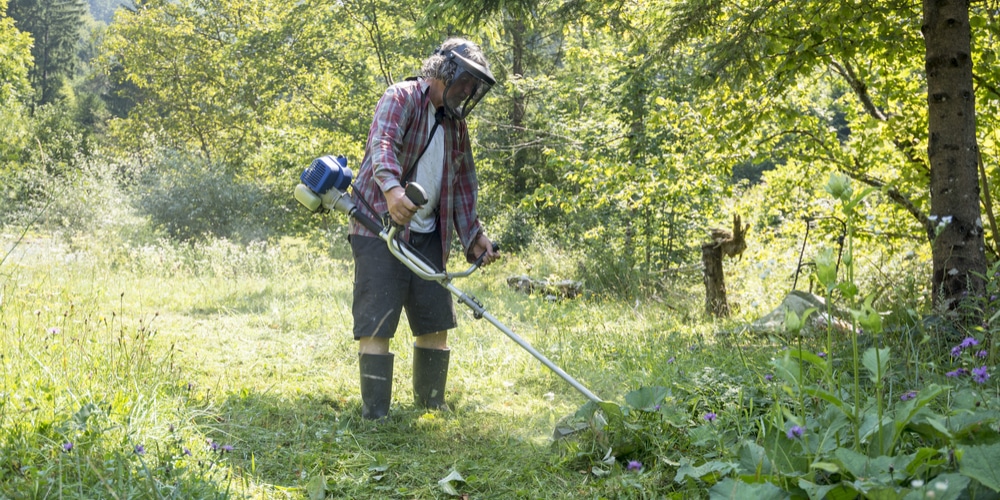When taking care of your lawn or garden, the job often requires a tool that will get to places where your lawnmower cannot. Weed eaters, otherwise known as weed whackers or string trimmers, are a handy solution to this problem. The trouble here is that you will only need their services during the spring and summer months – so what’s the best way to store them in the off-season?
The answer is surprisingly nuanced, which is probably why you’re here, right? You’re not alone. In this piece, we’ll be delving into the world of weed eater storage, highlighting all you need to know so that your unit lives to serve you for many, many years.
Let’s get right to it.
How to Store a Weed Eater: Cordless Weed Eater Storage
Cordless and electric weed eaters are relatively trouble-free when packing them away since they do not suffer the complexities of gas tanks. For battery-powered weed eaters, what you’ll want to do is separate the battery from the unit and store it in a cool, dry place. Once this is done, you can place the machine wherever you please, whether it’s on a horizontal shelf or a vertical hanger.
For units that need to be plugged in to operate, just ensure that all the parts are clean and wrap the power cord around the unit’s arm and place it where you see fit.
Gas-Fueled Weed Eater Storage
Here’s where the trouble is for most of us. There will always be an extra level of care when it comes to machines that use gasoline, and weed eaters are no exception. Your first move here will be to ensure that the gas tank is completely empty before stowing it away. This will eliminate the possibility of leakage and gas deterioration, which happens to non-stabilized gasoline after about six months. Where possible, transfer the unused gas to another implement rather than dump it out.
The next step will be to thoroughly clean your weed eater, which will entail a couple of steps. Let’s take a look:
Carburetor
The carburetor of your weed eater is the attachment that transfers fuel from the gas tank to the engine, which means that there will be residual traces of gasoline left in it. To ensure your machine is completely clean, you need to get rid of this. That’s the bad news; the good news is that the solution is very simple. As soon as you’ve emptied your gas tank, fire up the machine and let it run until it shuts off on its own. That will burn off all the remaining fuel in the carburetor lines.
Air Filters
Gasoline-powered weed eaters are fitted with air filters that protect the engine components, which accumulate dirt and detritus not only while in use but even while in storage. Look for the filter at the back of the engine box. They will usually be covered up by plastic, which you can unscrew to reach the filter directly. Use an old toothbrush or soft brush to scrub away any visible dust and clear away any grime using petrol, acetone, or methylated spirit wash.
Take note that these steps should be part of your regular maintenance routine, taking place every two months or so.
Vertical or Horizontal?
That’s the big question, isn’t it? According to manufacturers, the best way to store weed eaters is with the engine up and the arm hanging down. The reason here is that the chances of any residual fuel leaking will be minimized. It’s not set in stone, however; as long as you’ve cleaned and emptied your weed eater, there won’t be any problem whether you store it hanging vertically or laying on a shelf.
Wall brackets, hooks, or horizontal shelves are handy options for garden sheds or garage storage options. Never leave your weed eater lying on the ground; it may be stepped on or damaged in some way. All this is aside from the space it will take up lying there.
How to Store a Weed Eater: Final Thoughts
As with any other tool or machine in your home, office, or property, the way you store your weed eater will determine how much utility you get from it. If you want your machine to function optimally for the longest possible time, storing it appropriately should be prioritized. Should you be unsure about any safety requirements concerning your weed eater, look through the user manual. It will be sure to have any instructions that affect your particular unit. Stay safe!
Related article: lawnmower losing power when cutting

